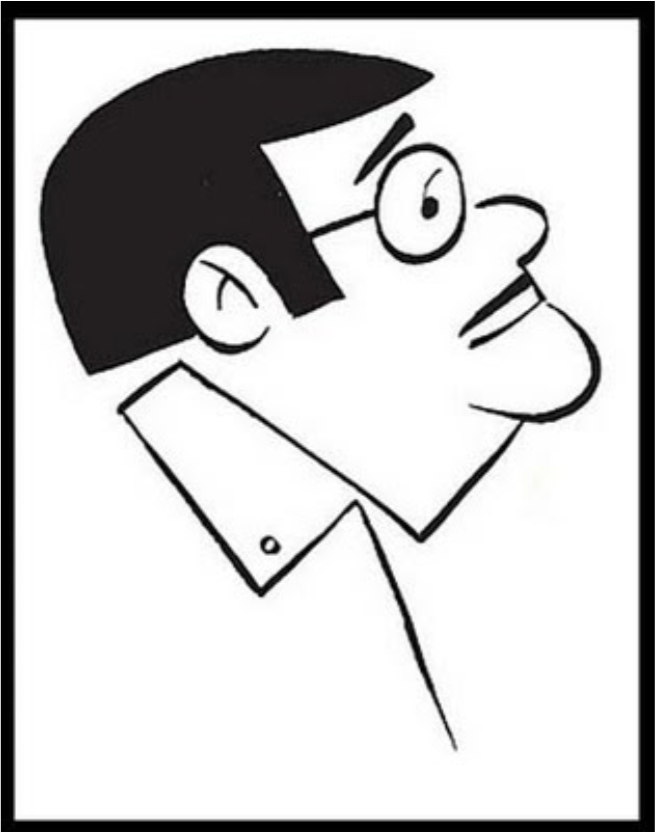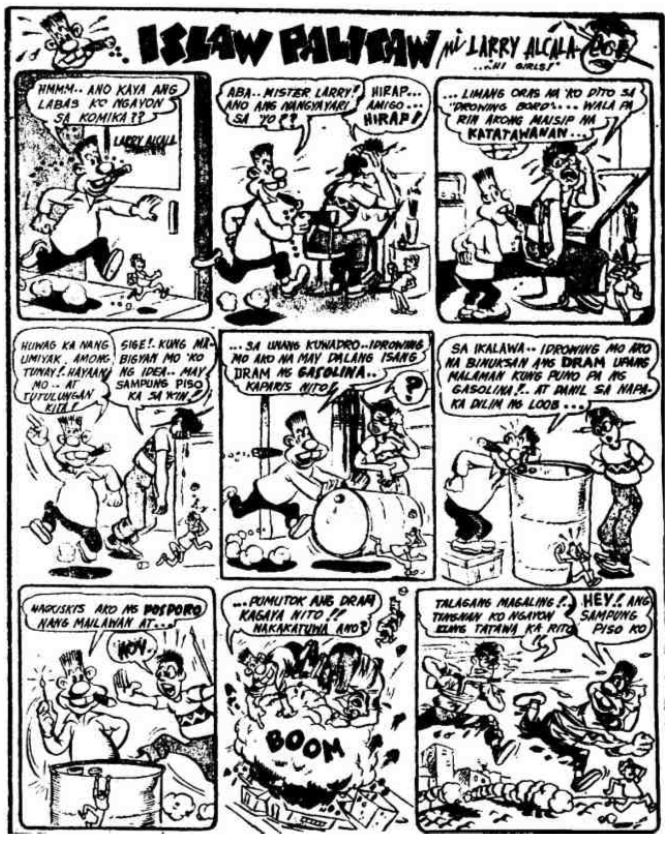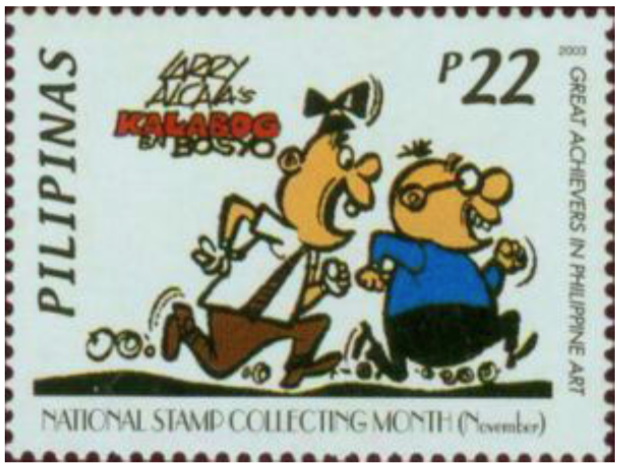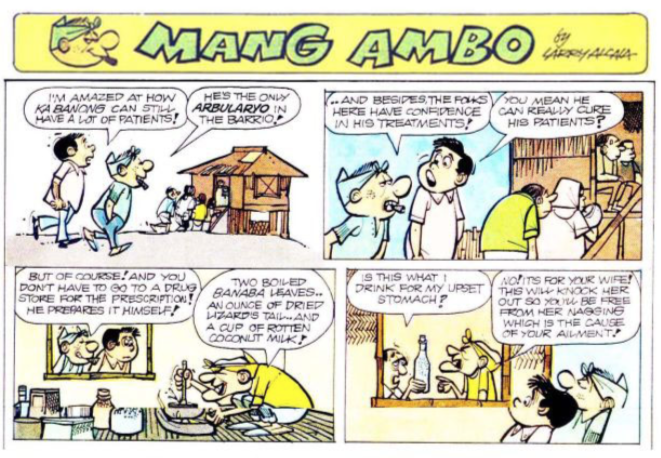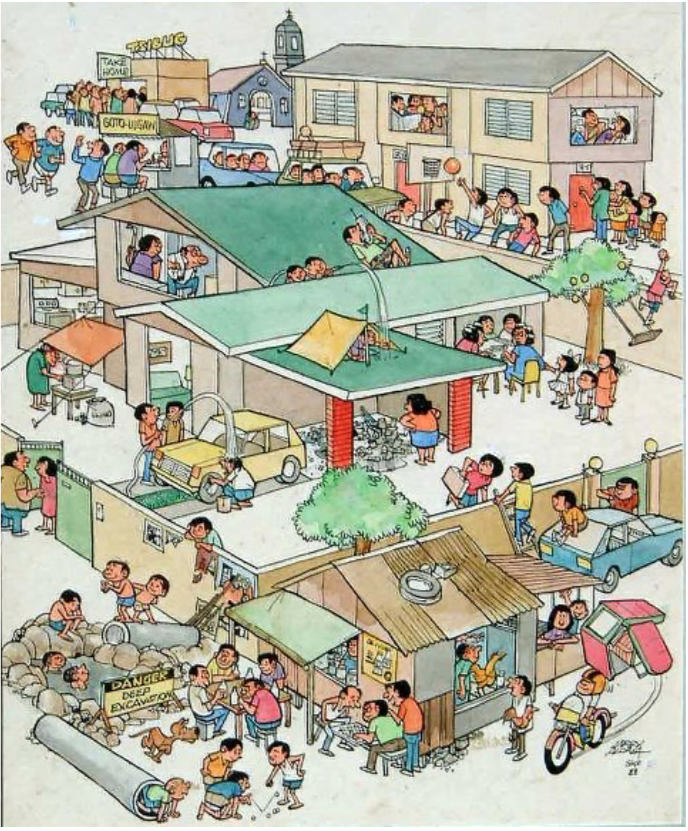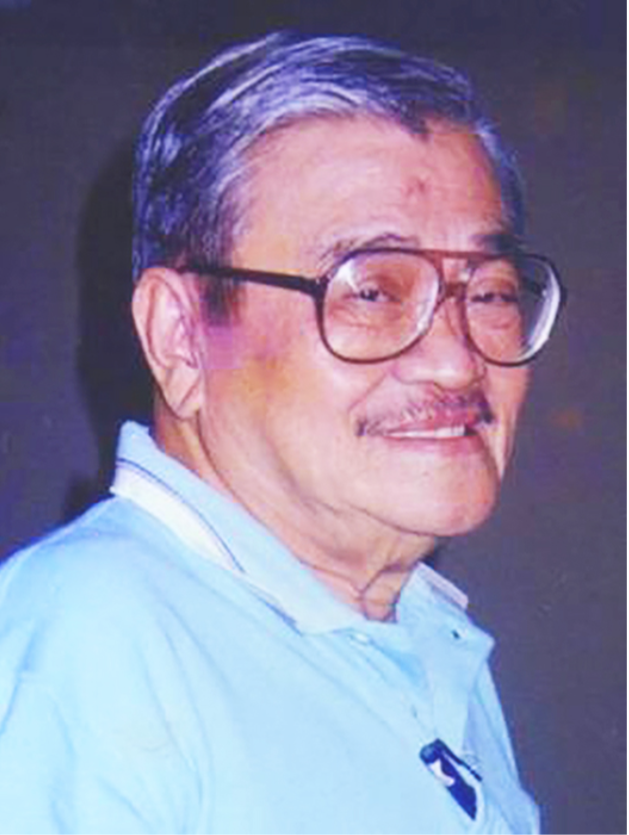LARRY ALCALA: Mastery in Simplicity, Messages in Images
by Ruben de Jesus (PBBY Sectoral Representative for Illustrators)
This article was first published in the Orden ng Mga Pambansang Alagad ng Sining 2018 (CCP), a collection of essays and biographies about Filipinos who were awarded the Order of National Artists in the Philippines in 2018.
Content and form in a body of work give us an idea of its creator’s concerns. The work may be personal or clearly intended for a particular audience. It can also exhibit the author’s stand on relevant issues, presented with humor and wit. This is what makes National Artist Larry Alcala’s Slice of Life series and his other cartoon creations skillful, creative, interesting, and most of all, relevant to this day.
Iskolar ng Bayan
As a student at the University of the Philippines, Larry Alcala was the recipient of scholarships. He was active in the Philippine Collegian, UP’s student organ, as a staff artist and as a representative of the board of management. He was an ideal model of the iskolar ng bayan, one who offered his creative and organizational skills to serve the Filipino people to whom he owed his exemplary education.
Alcala joined the faculty of the UP College of Fine Arts immediately after his graduation in 1952. He was to stay there until he retired 30 years later. Through his efforts, Visual Communication was institutionalized as one of the fields of study at the UP College of Fine Arts. Illustration and graphic design as important components of advertising and editorial design were given ample coverage in the Visual Communication course offerings. This move kept the school abreast with the creative developments in more advanced countries while applying these visual standards to address local issues through effective images.
Alcala, dearly called Mang Larry, shared with budding artists the technical skills and material components needed in translating concepts into crisp images. In this process of sharing, he enjoyed sitting down with his students and exchanging stories not about creating but about living. This made his mentoring productive and relevant.
Slices of the Filipino Spirit
Alcala started his career by juggling school work and cartooning. His dedication and discipline helped him endure the pressure of having to produce daily outpuits for several decades. In his long and productive career as cartoonist, he created hundreds of distinct and memorable cartoon characters. His comic strips, exhibiting a balance of message and humor, served as commentaries on Philippine society.
ISLAW PALITAW
His first comic strip, “Islaw Palitaw”, appeared in Liwayway Magazine after World War II.
KALABOG EN BOSYO
In 1947, he created Kalabog en Bosyo, his longest running comic strip, first published in Pilipino Komiks. The two bungling detectives featured in this work speak a blend of Tagalog and English as they go through their hilarious misadventures.
MANG AMBO
In Mang Ambo, another comic strip, the titular character mirrors the weakness and eccentricities of the Filipino as he goes through life in Barrio Bulabog. Mang Ambo is annoyed at the lack of good sense in his community though he himself sometimes tries to get away with his foolishness to face life’s demands while keeping to his comfort zone. make all the difference.
SIOPAWMAN
Siopawman is a big-nosed, large-toothed, and overweight but energetic, superhero. His “heroic” adventures are capped with a big treat of siopao, or a dive into an enormous serving of Filipino dishes and desserts.
ASIONG AKSAYA
Asiong Aksaya may be regarded as the poster boy for wasteful ways and reckless spending. There are times when he tries to counteract his ridiculous extravagance by attempting to cut down on cost, but his supposedly alternative measures turn out to be be even more costly and absurd.
CONGRESSMAN KALOG
As early as the 1960’s, Alcala had already been making commentaries on the political system with his wit and critical sense. Bribery, vote buying, non-payment of taxes, and kickbacks from government projects are personified by the character Congressman Kalog.
Of course, Alcala’s fans always looked for his caricature profile hidden within the busy scenes and situations depicted in each weekly release of his Slice of Life artwork. Common practices, local traditions, community events, and even national issues were presented in a panel of tableaus of the Filipino way of life. Alcala made the viewer not just an observer but also a participant in the situations he depicted.
His houses and buildings are rendered in straight and precise pen-and-ink lines, giving a hint of his earlier leanings towards engineering. His people are rendered simply, as somehow dictated by cartoon visual standards, but are variably expressive depending on the situations and events. Creating crowds is a visual skill that, if not masterfully handled, results in clutter and imbalance. Rhythm is the key to his execution, grouping similar elements in horizontal or diagonal succession.
I was not lucky enough to have him as my professor at the UP College of Fine Arts. My only encounter with Professor Alcala was when he sat as panelist in my pre-defense thesis presentation. But in 1991, I was blessed to be part of a children’s book illustration workshop organized by the Philippine Board on Books for Young People (PBBY). Mang Larry was one of the founders of PBBY, the group that organized the workshop with the Goethe Institut. After the workshop, we thought of forming a group of illustrators for children. The board, led by two National Artists, Larry Alcala and Virgilio Almario, gave us their blessings with full confidence. Now, our group, Ang Ilustrador ng Kabataan is on its 30th fruitful year.
Mang Larry gained respect and goodwill among Asian artists. He was our country’s representative to the First Asian Cartoonists Conference in Hiroshima. There he met Osamu Tezuka, the creator of Astro Boy and known to be the proponent of the manga revolution in Japan. The professional bond between these two icons continued with cordial written exchanges of their thoughts on how cartooning can be fostered in the Asian region.
FAMILY MAN
According to his family members, the dining table was always a venue for lengthy discussions about anything under the sun with Alcala and wife Lupe encouraging the healthy exchange of ideas. He made sure that his children were exposed to the arts and sciences by bringing them to museums, science fairs, and concerts. He instilled discipline in his children but allowed them to take breathers from their studies and assignments to watch television.
Alcala humanized objects that were dear to him and his family. He gave names to the cars they had through the years—“Choy” for their Chevrolet, “Bok” for their Vauxhall, “Itoy” for their Toyota. In the 1950s, he named their television set “Teban”.
When they stopped in traffic, he made his children observe the pedestrians crossing the street and guess what this man or woman could be thinking at that particular moment. Alcala created his own stories about these people based on his observations. According to the eldest, Lauro “Boyet” Alcala Jr., he and his siblings acquired this gift of keen observation and boundless imagination from their father. Boyet also remembers that his father always made sure that they heard Sunday mass before visiting his grandparents in Singalong for their weekend gathering with relatives.
•••••••
I still remember the conversation between two grade school students at the parking space in front of Claret Church in Quezon City where I attended the wake for Larry Alcala in 2002:
Student 1: Sino ba ang nakaburol sa chapel?
Student 2: Yung nagdodrawing sa dyaryo ng maraming tao. Maraming nangyayari. Tapos hahanapin mo yung mukha niya na nakatago doon sa drawing.
There are so many negative things happening in our country right now. There are so many struggles that we have to go through as an individual, as a community, as a country.
Larry Alcala’s art is still very relevant during these times. In his simple but distinct style, he has effectively captured the core of the Filipino in his Slice of Life and in his character creations such as Mang Ambo, Asyong Aksaya, Siopawman, Kalabog and Bosyo, and Congressman Kalog.
His legacy as an educator, mentor and proponent of the visual communication program at the university has made the role of the artist more significant in Philippine society.
Most of all, his art can be appreciated by Filipinos from all levels of society. There is mastery in his simplicity. There are messages in his images. His galleries are the dailies.
Amidst all the uncertainties and struggles we have to face, I hope and pray that we go back and look for those positive values that have been belittled and hidden in the noise, chaos and deception that Filipinos also created.

